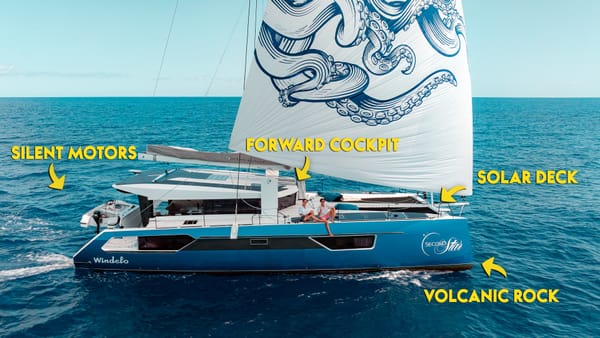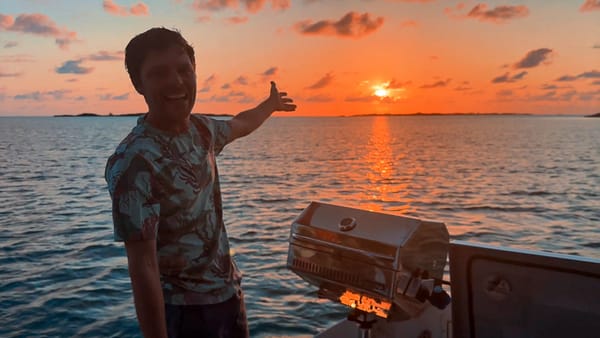Bahamas Bound 2 – Blowing A Line and Checking In

After a few weeks of boat preparation and a long day of sailing across the Gulf Stream we crashed hard last night. Mangrove Cay is just a tiny spec of an island but luckily the winds stayed calm overnight and we slept like babies.
We couldn’t check into customs at the West End because they were hit hard by Hurricane Matthew and haven’t reopened yet. Which leaves us with a few options in the Abaco’s. We joined our friends David and Kristy of s/v Latitude Adjustment and we’ve decided to head for the northern bit of the Abaco’s and check-in at Little Grand Cay.
It’s only 25 nautical miles from Mangrove Cay and its crystal clear shallow water all the way. Sounds perfect, right? Crazy part is the winds are kicking up to 25+ knots out of the northeast, which is the direction we are heading. Today’s sail is going to be an upwind beat with a lot of tacking. We considered staying put to wait for calm winds, but we need to get checked in so we can touch land and start exploring. Plus, the wind speeds will continue to increase over the next few days, so this is our “best” weather window.
What a day! It all started off with a magnificent sunrise that even the cats were impressed by. Then top that off with the highest continuous winds we’ve sailed in so far and it was exhilarating. We’ve seen some winds kick up to 32knots in the past, but they came with a storm so the high wind was always short lived. Each little experience is growing our confidence, both in our boat and ourselves.
That is probably our biggest takeaway so far from sailing and travel in general. We are continuously learning a lot about ourselves and how we handle situations. Sometimes we’re beaming with pride and others we’re hanging our heads in disbelief and shame. Sailing can be humbling to say the least.
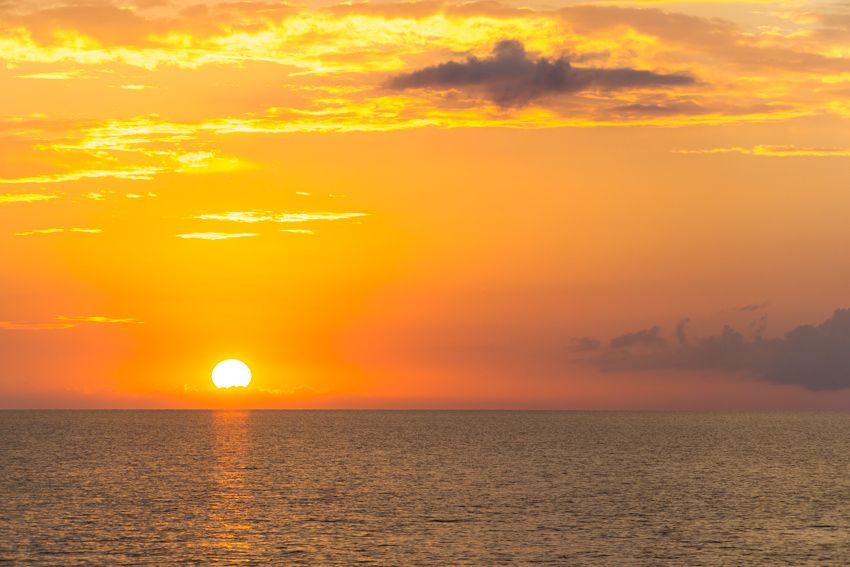
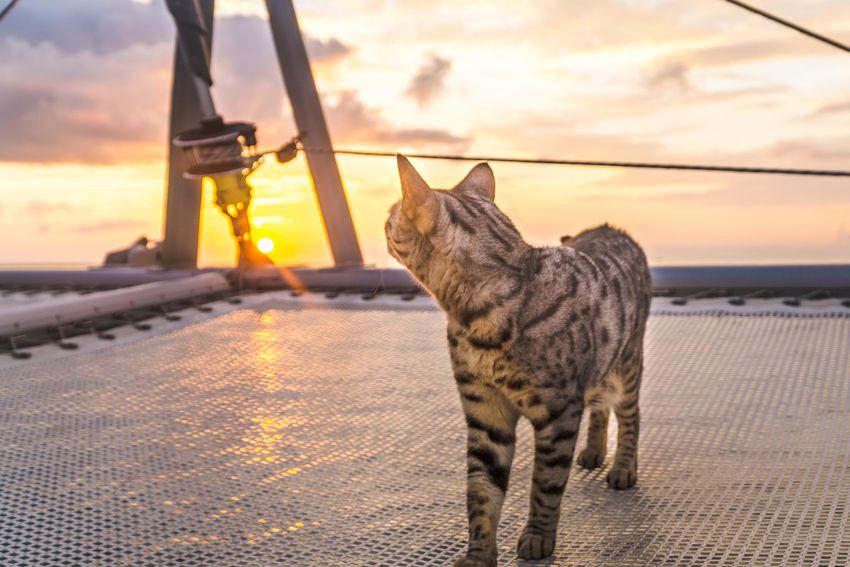
Sailing High Winds & Reefing
Some of the best sailing tales we’ve been told over the years have been about sailing in gale force winds (32-63 knots) and big storms. We’re not quite ready for that yet…but choosing to sail on these manageable 20-30 knot days are excellent reefing and high winds sailing practice. We’re learning more about how our boat handles, how much sail she likes up and where our personal strengths and weaknesses lie.
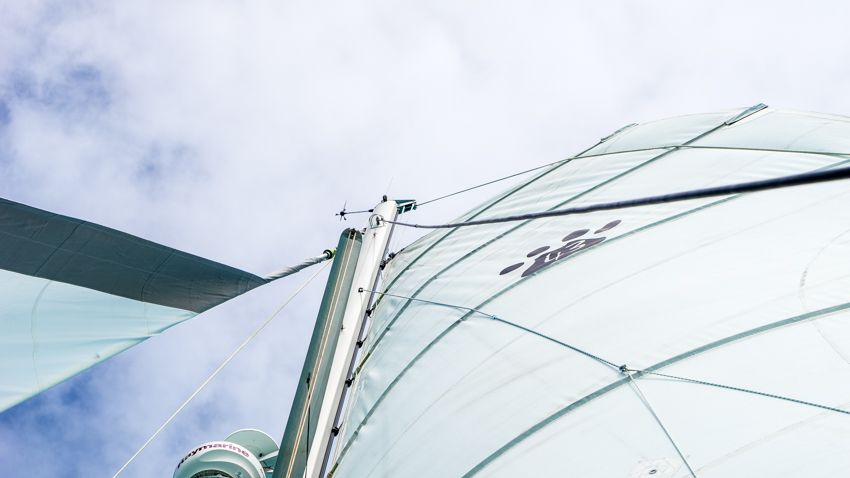
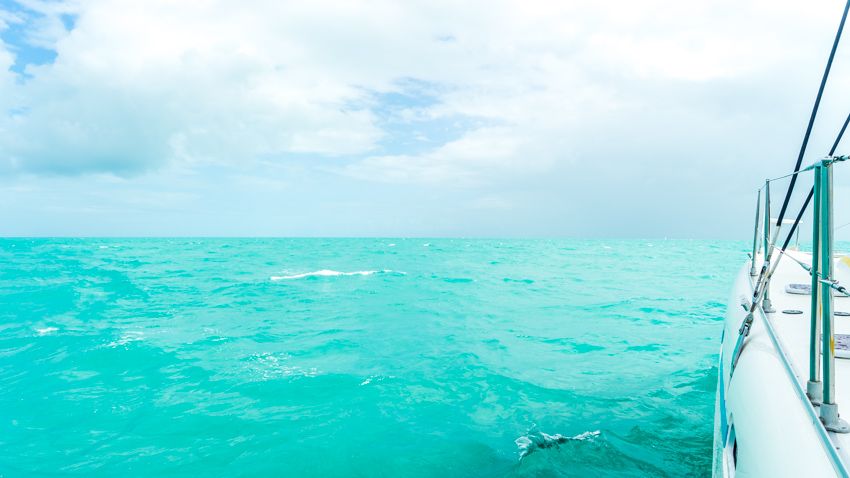
Blowing A Line
Blowing a line sounds a lot like a gun shot. It’s scary. Then of course there was the chaos that came immediately after with our sail violently whipping about uncontrolled. It required quick, decisive action to realize what happened and then react to the situation.
Luckily, we sprung into action. We didn’t panic and we communicated well. That was good. As Jason’s sheeting the genoa in you can hear in the background (of the video) “wait, wait, wait”; that’s me alerting him that a line is stuck, then you can hear “ok, go, go, go” right before our brand-new Action Cam is taken for an unexpected ride! Once we had the new line run and everything back in order we had to ask ourselves, “what did we learn?”.
Here comes that 10-year rule again and in the form of an excellent lesson. Anyone can blow a line but it’s much more likely to happen on older, sun and salt ridden lines. We’ve mentioned before that we’ve been told there is a 5 and 10-year life span when it comes to boats and boating equipment. Some items last about 5 years while others last 10 or more. During our survey, it was pointed out that our running rigging (all the ropes, which once in use are not called ropes any longer, now they are called “lines”) were getting closer to the end of their life span and would need to be replaced within a year or two.
However, it’s very hard to put an exact time stamp on a lot of these things, it’s more of an educated guess. Our lines are getting older but many of them do still have life in them. And every sailor we talk to says something like this: you must get as much life out of things as you reasonably can, without putting safety at risk. It’s not entirely about being frugal, it’s also about not being wasteful.
So, we replaced a couple of lines that showed the most wear and tear, we bought a couple of backups for the trip and we plan to replace the others sometime in 2017. After this experience, I think we’ll stick to that plan or bump it up!
We are learning how important it is not to have any questionable equipment, and if we do, we better have the replacement on board and accessible.
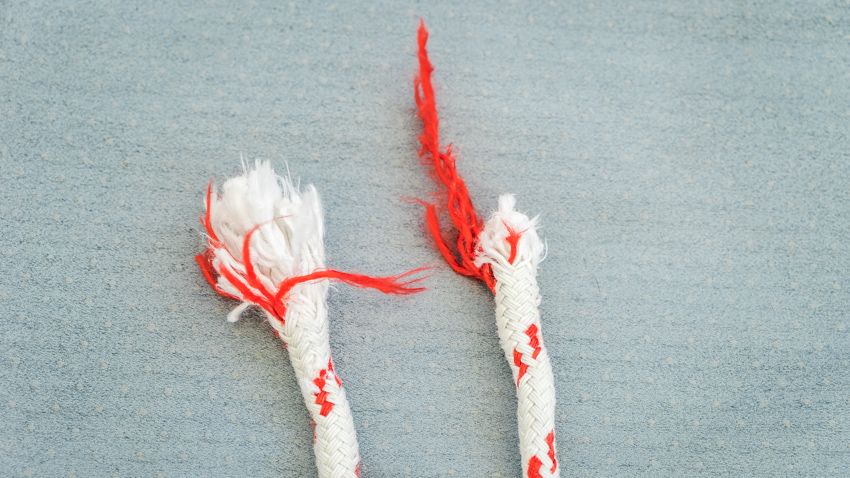
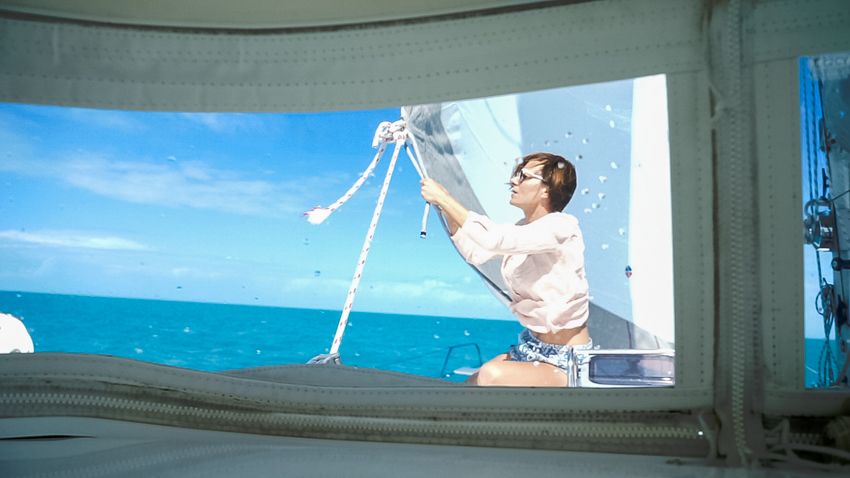
Flying the Q Flag
Flags are a big, big part of boating, especially traveling abroad. There are a lot of rules about flags, how and when they should be used and in what order they should be flown. They are a symbol of courtesy, but also a form of communication. Just like the international diver down flag is used to let nearby boaters know there are people in the water.
The yellow Q flag (quarantine) is flown under the starboard spreader of the mast until we have properly cleared customs and immigration. Once we are cleared, we pull down the Q flag and hoist the Bahamian flag as a sign of courtesy. We can then fly our American flag under the Bahamian flag to let people know where we are from.
Now, you will notice that sometimes we won’t be flying any flags. Those little flags are not high quality and get ripped up quickly in high winds. So, we bring ours up and down a lot to preserve it. It’s common practice among the cruisers we’ve crossed paths with and while it is a courtesy to fly the courtesy flags, it is not legally required here.
Clearing Customs In The Bahamas
We’ve cleared customs to many countries in the past by foot, car, RV and plane, but never by boat. It’s a totally different experience!
Each country has different rules and restrictions about what is required and allowed. Checking into the Bahamas was by far the easiest and friendliest customs experience we’ve ever had. We checked the customs website, made sure we had the proper documentation required and that proved to be all that was needed.
It cost $300 cash (USD) for our 180-day cruising permit to be in the country and it includes a fishing license for the duration of our stay.
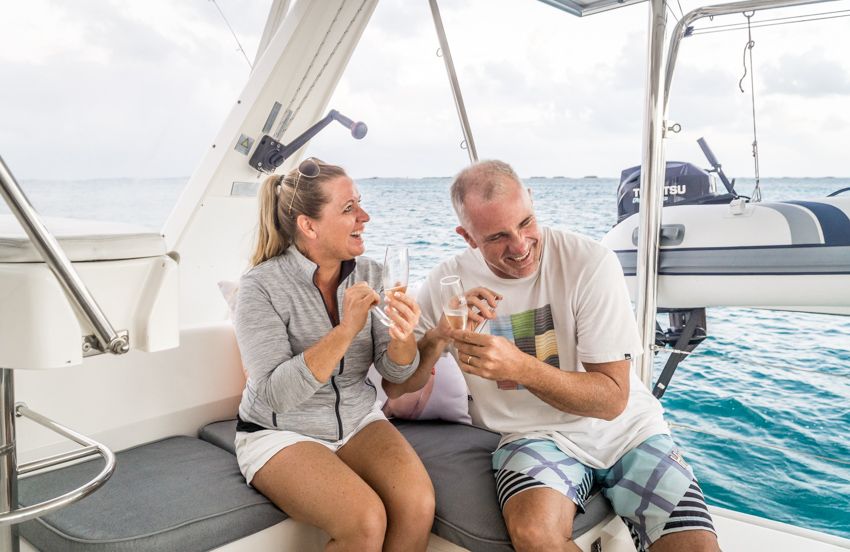
Keys and Cays
You may notice in the video we say “keys” but in the post, and on the map, it shows “cay”. Although spelled differently in the USA, the Bahamians still call them keys. While we were researching our route, we kept saying it wrong, and I’m sure we’ll flub it many times still.
Sailing Report
Check out our interactive Map page where you can zoom, click and see all the adventures.
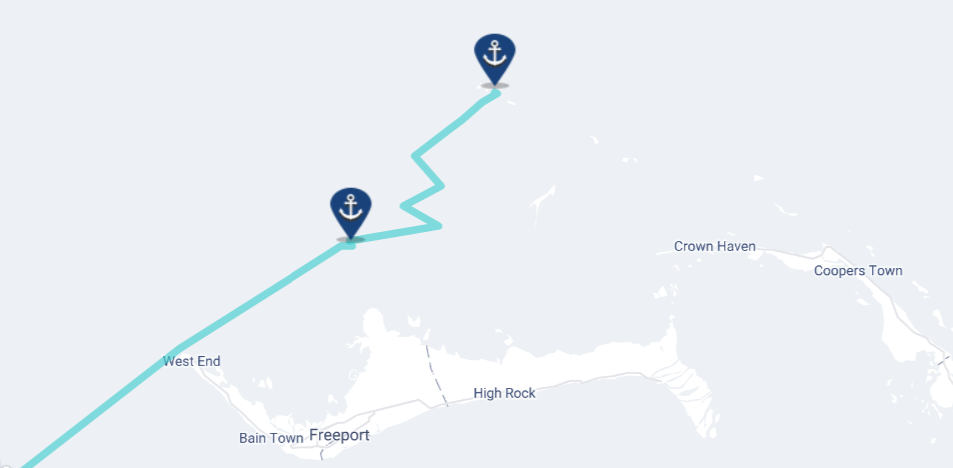
Weather: Winds 20-25 with gusts up to 30 knots
Anchorage: In between Felix Cay & Big Grand Cay
Nautical Miles Sailed: 47
Date: November 5, 2016
Gear You May Have Noticed
- Chambong, read the reviews on Amazon (they are hysterical) and you’ll want one too, or at least you’ll want to give one as a gift.: http://amzn.to/2gSr8S3
- iPad Pro using Garmin Bluecharts App: http://amzn.to/2d9Oopf
- Predict Wind App: bit.ly/PredictWindIridium
- iPad Mount at Helm: http://amzn.to/2fT84PG
- Freezer Under Cockpit Table: https://www.gonewiththewynns.com/product/dometic-portable-electric-fridgefreezer
Cameras Used to Capture This Adventure:
- Sony A7ii: http://bit.ly/a7rii-sony
- Sony Zoom Mic: https://www.gonewiththewynns.com/product/sony-gun-zoom-microphone-black
- Sony 24 – 70mm f4 lens: http://bit.ly/2470-zeiss
- Sony Action Cam: http://bit.ly/sony-as300
- All of our up to date photo and editing gear: gonewiththewynns.com/best-travel-camera-video-photography
Oh, and if you noticed more wind noise than normal it’s the woes of getting a new camera the day before departure. Jason discusses on the microphone page in our gear store: https://www.gonewiththewynns.com/product/sony-gun-zoom-microphone-black
It feels good to officially be in the Bahamas and we’re itching to start exploring. If you have any tips or favorite spots please share in the comments below. We’ll be bouncing around the Abaco’s through the holidays. Oh, and if you are here, let us know where and maybe we can say hello in person!

